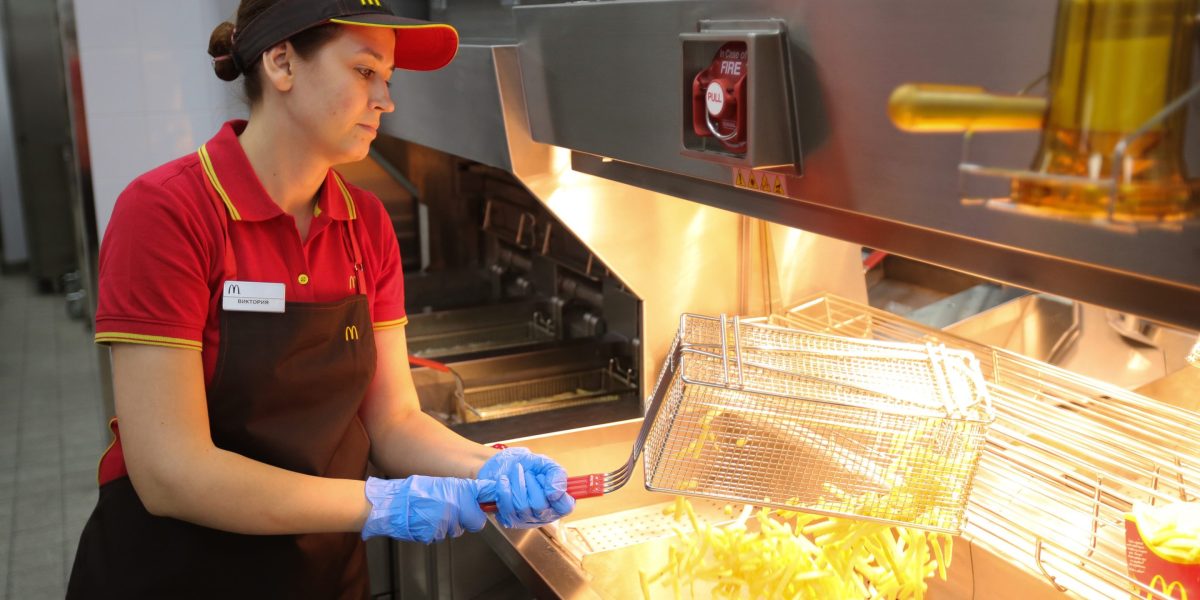It turns out that, no, fast-food eaters would not like fries with that. As more customers lose their appetite for fast food over sky-high prices, North America’s largest fry producer is reeling from the slowdown.
Lamb Weston, which can churn out 250 million pounds of frozen potato products annually at just one facility, announced earlier this month that it would lay off 4% of its workforce (about 428 workers) and shut down its Connell, Washington, production plant. Since the beginning of the year, its share price has plummeted by about 33%.
A Lamb Weston spokesperson told Fortune the closed plant was an older facility representing only 5% of the company’s capacity.
CEO Tom Werner said on an Oct. 1 earnings call that quick-service burger chains in particular are to blame for Lamb Weston’s slump. Traffic at those restaurants decreased 3% in the company’s first quarter, while restaurant traffic overall slumped 2% year-over-year. Werner expects traffic to continue to falter through fiscal 2025.
McDonald’s is Lamb Weston’s largest customer, accounting for 13% of its sales. The potato processor also produces fries for Yum Brands, which owns KFC and Taco Bell.
Menu price inflation has turned fast food into a luxury for many consumers, meaning industry titans like McDonald’s and Wendy’s have struggled to attract consumers, let alone get them to splurge. McDonald’s same-store sales shrank 1% last quarter, and while Yum Brands reported a 4.5% bump in year-over-year revenue for its second quarter, it fell short of expectations due to disappointing sales.
“At the end of the day, we expect customers will continue to feel the pinch of the economy and a higher cost of living for at least the next several quarters in this very competitive landscape,” McDonald’s U.S. President Joe Erlinger told investors in July.
French fries as an economic indicator
Werner argues that french fry sales are generally a good indicator of economic health. They are usually one of the more expendable fast-food side items and are nixed from orders when consumers feel penny-pinched. But during healthy economic times, they’re the first side that customers add to their order. Werner called this the “fry attachment rate” in a CNBC interview last October.
Despite the fry attachment rate actually increasing to 24% in 2022, compared to 22% before the pandemic, Lamb Weston has continued to struggle as the fast-food industry adapts to a difficult environment. McDonald’s CEO Chris Kempczinski acknowledged in February more consumers are turning to home-cooked meals to save money. Beyond that being bad news for McDonald’s, it’s also trouble for Lamb Weston, which said that 80% of all frozen fries products consumed in the U.S. comes from fast-food restaurants.
The fast-food industry slowdown has also sparked a value war and the introduction of promotional meal deals to lure back customers, including the McDonald’s $5 meal deal and the Wendy’s two-for-$3 breakfast deal. But while such enticements have helped increase store traffic, the promotions haven’t been of much help to Lamb Weston, as restaurant visitors aren’t eager to upgrade to larger fry sizes.
“It’s important to note that many of these promotional meal deals have consumers trading down from a medium fry to a small fry,” Werner said.
There’s a silver lining for Lamb Weston, however. Werner said that in addition to maintaining its restaurant partners during the difficult stretch, the company also expanded business with other chains this past quarter.
Stephen Zagor, a food and restaurant consultant who teaches at Columbia Business School, said the fast-food slowdown, at least for McDonald’s, will be short-lived, particularly as inflation cools.
“It’s going to be a blip,” he told Fortune in July. “They’re going to come back. They always come back.”
McDonald’s and Yum Brands did not respond to Fortune’s request for comment.

